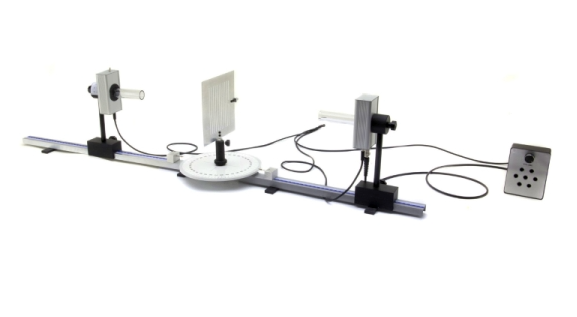Principle
The intensity of a source of radiation, e.g. a microwave transmitter, at any given location depends on the distance of this location from the (approximately punctiform) source. Actually, due to its antenna geometry, a microwave transmitter can only be regarded as a punctiform source of radiation at long distances, which is why it is described as a virtual source for shorter distances.
Benefits
- Convenient all-in-one set includes control unit, transmitter and receiver as horn antennae, microwave probe, microwave benches, grating, slit plates, prism, and reflection/absorption plates
- With the same set, all aspects of microwave physics can be studied quantitatively: polariziation, reflection, transmission, refraction, propagation, diffraction, interference, inverse square law, standing waves, conservation of energy in reflection and transmission
- Very detailed experiment guides for all experiments
Tasks
The radiation intensity of the microwave transmitter is measured for various distances and the position of the virtual source is determined.
Learning objectives
- Microwaves
- Electromagnetic waves
- Spherical waves
- Virtual source
- Reflection
